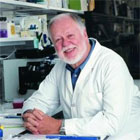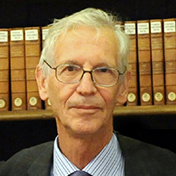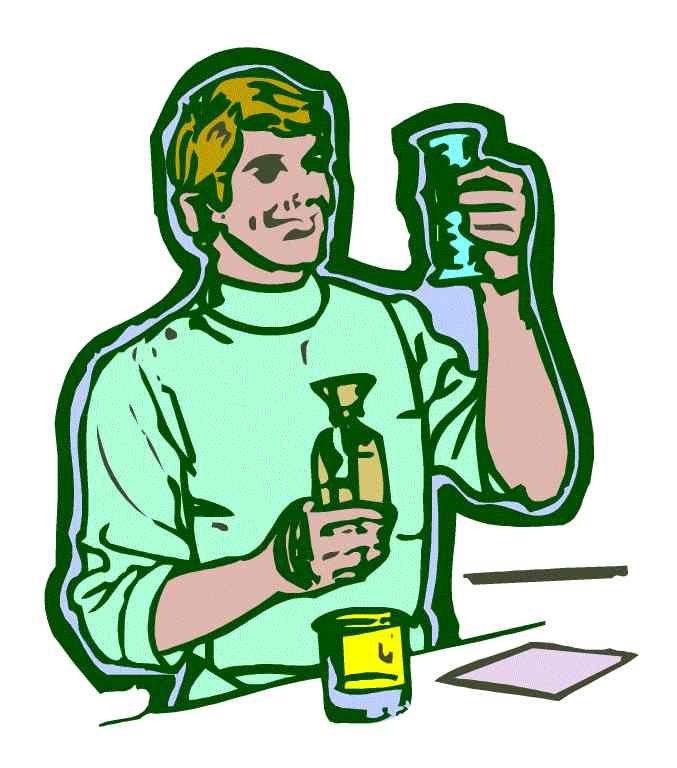
TRANSLATE THIS PAGE INTO ANY LANGUAGE
DNA

HEALING HEADLINES
FORGET AN ARMAGEDDON
CHANGE FOR THE WORLD
EMBRACE A DNA HEALING
CHANGE FOR THE WORLD
Christianity tells us that God is sending destruction
in the form of Armageddon.
But just the opposite is happening.
From Eta Carina is coming an adjustment of DNA.
The Genetic Strand is being changed by laser light
being emitted by Eta Carina.
If you would like to see the documentation concerning
Eta Carina please :
CLICK HERE to go to The Genetic Page
ETA CARINA AND HEALING DNA
A Brief Explanation Concerning Eta Carina
Eta Carina is the only star in the visible sky that scientists
do not understand.
Carina means The Keel Of A Ship.
Carina was named for the keel of the ship Argo
in the Greek Myth.
THE KEEL OF THE SHIP SPOKE
In the Greek myth, it was the Keel Of The Ship Argo,
that told Jason where he could find the Golden Fleece.
Finding the Golden Fleece was important,
because everyone it touched was healed.
THIS MYTHOLOGY SPEAKS TO US NOW
Greek Mythology speaks in a hidden language
about universal cosmic things.
There was no ship Argo.
There was no Golden Fleece that healed.
Of course the keel of the ship could not talk. It was wood.
So what was that myth talking about?
NOW IN OUR AGE
THE KEEL OF THE SHIP IS TALKING
The most bizarre star nebula in history is
drawing attention
of scientists and astronomers everywhere.
It is the Keel Of The Ship Eta Carina and
it is sending energy
to the earth that can impact DNA healing.
The Keel of the ship spoke and gave
instructions for healing in the ancient myth.
Eta Carina is fulfilling that prophetic myth
and giving instructions to scientists in this
age of Aquarius.
If you go to the Hidden Meanings home page,
you will find links to Eta Carina pages
so you can be brought up to date
on why I feel that Eta Carina is the
Keel of the Ship that will lead
science to the Golden Fleece of DNA.
NOW THE DNA
HEALING HEADLINES
GENE THERAPY MAY IMPROVE
BRAIN CANCER TREATMENT
BY PATRICIA REANEY,
LONDON (REUTERS)
British scientists are working on new
gene therapy techniques to
improve brain cancer treatments and to
predict how women with
breast cancer will respond to treatment.
Researchers at
Britain's Institute of Cancer Research and the
Royal Marsden Hospital
are testing a technique to switch on inactive
chemotherapy drugs to kill cancerous cells.
So far results of laboratory tests have been encouraging.
"Were seeing substantial cell death,"
Dr. Gill Ross, one of the leaders of
the program, told reporters.
Brain tumors are among the most difficult cancers to treat because many types are resistant to radiotherapy, and chemotherapy drugs have a limited effect on brain tissue.
There are also no screening tests to identify risk factors
for the illness, which strikes
an estimated 40,000 people in the
European union each year.
Nearly half of the patients with brain cancer
die within a year of their initial diagnosis.
In the so-called "pro-drug" therapy,
the scientists inject bacterial genes,
wrapped in a virus, directly into the tumor.
The genes trigger an enzyme in the tumor cells
which switch on the inactive
chemotherapy treatment.
Preliminary laboratory data in tumor types suggest
that this pro-drug therapy approach is not only feasible,
but also effective,
certainly under laboratory conditions said Ross.
MUTANT GENE MAY CAUSE BACK PAIN

THE ASSOCIATED PRESS
NEW YORK (AP) Researchers have identified
a mutant gene that may be
responsible for a severe kind of back pain
caused by ruptured disks in the spine,
a finding that could lead to new treatment.
Back pain has long been one of the most poorly understood disorders, though it affects most adults at some point in their lives.
The new research was published in today's
Science magazine and reported
by The Wall Street Journal.
This study conducted with scientists at the
University of Oulu in Finland,
analyzed the DNA of 180 Finnish patients with Sciatica.
Nine patients were found to have the mutation,
and one of the 230 patients
in a control group without back pain had it.
The DNA of the extended families of four of
the nine patients with
the defect revealed a total of 23 relatives
with the mutation all of whom
suffered disk problems, indicating that the
defect likely causes back trouble.
.
SCIENTISTS TURN GOOD CELL CANCEROUS
BY DAVID KINNEY,
THE ASSOCIATED PRESS
Researchers for the first time have created a cancerous human
cell by genetically altering a normal one-an
important step toward developing drugs
that could one day wipe out cancer.
Scientists already know that cancer is caused
by genes turned bad,
and they have been trying to develop drugs that
fix these flaws.
Until now. they have been fumbling in the dark.
They aren't sure exactly which combinations of
flaws cause the many
types of cancer.
Nor do they know precisely which drugs repair
which faulty genes.
But biologists at the
Massachusetts Institute of Technology's
Whitehead Institute
for Biomedical Research
showed that they can create a cancerous cell
with specific genetic flaws in the lab.
The next stop is trying to find drugs that
correct those errors.

The work led by MIT's Dr. Robert Weinberg,
was reported in today's
issue of The Journal Of Nature.
This provides a laboratory tool, and it's a significant one" ,

said Curt Harris,
chief of the
National Cancer Institute's Human Carcinogenesis Lab.

Moshe Yaniv,
a cancer researcher at France's Pasteur Institute,
called Weinbergs work a landmark paper.
By using this latest breakthrough, scientists
can work backwards.
They can take, say, human breast cells,
genetically alter them
and see what happens.
That way, they can identify some of the
major genetic changes
that cause breast cancer.
GENETIC FLAW MAY TRIGGER
SLEEP DISORDER

THE ASSOCIATED PRESS
BOSTON:
Scientists believe they have discovered a genetic flaw deep
within the brain that causes narcolepsy,
the bizarre disorder that makes
people fall asleep without warning.
Two groups of scientists working independently found that
narcoleptics overwhelming urge to fall asleep
may result from a glitch in signals sent
between cells in the hypothalamus,
a part of the brain that
regulates appetite and other basic drives.
SUDDEN CARDIAC DEATH
HEALTH AND FITNESS NEWS SERVICE
For the first time there seems to be clear evidence that
sudden cardiac death in men runs in families.
Although researchers have long known
that a person's genetic blueprint
contributes to his or her heart attack risk,
this is the first study to
identify a genetic risk for sudden cardiac death.
CHOLESTEROL GENE
THE ASSOCIATED PRESS
After a four decade search, scientists have
identified a gene
that regulates the body's level of
so called good cholesterol,
a breakthrough that could someday lead to
a new way to treat one of the
most common causes of heart disease.
Flaws in a gene known as ABC1 prevent the
production of a protein
that the body needs to rinse excess bad cholesterol
and other fats out
of cells and the blood stream.
GENETICS AND
HEMOPHILIA
USA Today: Reporter Tim Friend
Headline:
GENETIC DEFECT REPAIRED WITH SYNTHETIC CODE
Technique could permanently correct disorders such as
hemophilia in humans.
Scientists report they have for the first time
permanently repaired a
genetic disease in animals with a single drug infusion.
They will test the treatment for humans next year.
The achievement detailed in today's Proceedings of the
National Academy of Sciences
holds implications for disorders from
inherited single gene defects such as hemophilia,
sickle cell anemia and thalassemia
(chronic anemia) experts say.
GENETICS AND ALZHEIMERS
Time Magazine:
Adding More Of A Single Gene
The Gene NR2B hisps build a protein called
NMDA which acts as a
receptor to specific chemical signals.
These chemical signals train brain cells to fire
in repeating patterns,
the patterns are what we experience as memories.
A Super Mouse genetically engineered by
scientists at Princeton,
MIT, and Washington University
whose DNA was cleverly altered
gives scientists rise to consider that the
genetic enhancement of
mental and cognitive attributes such as intelligence and
memory in mammals is feasible.
Scientists have applied to the FDA for permission to do experiments with advanced Alzheimer patients.
GENETICS AND ASTHMA
Reuters News Service:
Reporter Michael Kahn
San Francisco:
Scientists have identified two genes that contribute
to the development of asthma which could help reduce
susceptibility to attacks, researchers said Monday.
A new study suggests that just a subtle tweaking
of the two newly
identified genes could be the key to offering
relief to those suffering
from the respiratory ailment.
NEW DRUGS

USA Weekend: www.injersey.com
We'll have a whole new arsenal of medicines for
diseases that are currently untreatable says

Carl Feldbaum president of the
Biotechnology Industry Organization.
Diseases such as Alzheimers and multiple
sclerosis will be treated and
perhaps reversed by isolated molecules.
Patents will be able to rely on the efficacy
of new genetically targeted drugs.
CANCER TREATMENT
USA Weekend www.injersey.com
Imagine one of our leading killers reduced to
the status of strep throat.
Cancer deaths are expected to drop 21% by 2015
with 13% fewer people ever getting cancer.
Vaccines that inoculate infants against liver cancer,
and women against cervical cancer.
Drugs will hone in on the cancer via vitamins or
drugs engineered to an individuals
genetic makeup.
Tumors will starve when antiangiogenesis
drugs squelch new blood supply to cancer cells.
BACTERIA GENE PATTERN DECIPHERED

Washington AP.
Scientists have deciphered the gene pattern of a
bacteria that commonly causes meningitis and researchers
said it may help in the development of new vaccines.
In a study appearing Friday in the Journal Of Science,
American, British and Italian researchers report
they have sequenced the genome,
or genetic pattern, of a meningococcus bacterial
called Neisseria meningitis, Type B
U.S. TEAM REVERSES MOUSE DIABETES
By Maggie Fox,
Health and Science Correspondent
Washington Feb 26 (Reuters).
Scientists said on Monday they had
used stem cells -"master cells" that are the
source of new cells
in the body to reverse diabetes in mice.
They said their experiment is a first demonstration
that the cells are as valuable as people had said
they would be in treating disease.
The team at the
University of Florida in Gainesville
said it has already
started testing human cells in the laboratory
and think they will work too
To reverse diabetes you need to take a transplant
of the whole pancreas of the islets,

Dr Desmond Schatz a professor pediatrics
and a diabetes expert at Florida who
worked on the experiment said in a telephone interview.
Here the potential is you can take stem cells,
grow them up ,
and they grow into islets that are capable
of reversing disease.
The next step is to take this into humans, Schatz said.
In preliminary experiments it appears that we can
take human pancreatic duct cells and show that they can
differentiate into islet cells as well.
SKIN CANCER BREAKTHROUGH

LONDON (June 10) -
Scientists have determined that a spontaneous
change in a certain gene is involved in
70 percent of cases of melanoma,
the deadliest form of skin cancer,
which kills nearly 40,000 people a year worldwide.
Experts say the finding might lead to more
effective drugs for melanoma,
which accounts for just 11 percent of skin cancer,
but is hard to treat once
it has spread and accounts for almost all deaths
from skin cancer.

Dr. Paul Meltzer,
a senior cancer genetics
investigator at the
U.S. National Human Genome Research Institute
called the finding the
biggest breakthrough in melanoma research
for many years.
The discovery, published Sunday in the online
version of the Journal Of Nature,
is the first fruit of the Cancer Genome Project,
a spin-off of the international Human Genome Project
being run by
researchers at the
Welcome Trust Sanger Institute in Cambridge, England.
Cancer
is the disease that lends itself best to an
analysis of the human genome
because all cancers are a disease of DNA, said

Mike Stratton,
head of the Cancer Genome Project,
which aims to identify which of the
30,000 human genes are involved in
cancer and how.
Genes are made up of a DNA code,
represented
by a sequence of letters.
A mutation occurs when the order of the letters changes.
Mutations can be acquired in two ways:
either when DNA is damaged by
such toxins as radiation, chemicals or viruses,
or when mistakes are
made before cell division.
Each cell in the body contains a copy of the genome, and
duplicates it before it divides into two.
The copy isn't always perfect.
Most of the mutations are harmless.
However, sometimes a mutation will occur in a
particular cell in a key gene
and the result will be that the gene will be either
switched on or switched off.
That cell will then start to behave abnormally.
It will divide when it should stop dividing.
It will move out of its usual position in a tissue
and may even float
off into the bloodstream and deposit in another organ.
That is how cancer
evolves.
Experts estimate it takes about 25 years from the
first gene mutation
for a tumor to appear in an adult.
With the human
DNA sequence now available to us,
we have started the lengthy and daunting task of
trawling through the
vast tracts of genome, gene by gene,
to see if we can find the abnormal genes
that drive cells to behave as cancers,'' said

Dr. Andy Futreal,
a leader of the Cancer Genome Project.
Meltzer, who was not involved with
the research, said the
melanoma finding raises great hopes that the
ambitious Cancer Genome Project will pan out.
The scientists start by looking at the genes in
48 tumor samples comprising
six common cancers.
They take each one of the 30,000 genes of the human
genome in each sample and look for abnormalities.
After that, they look at the suspect genes in
a further 1,000 samples of
cancerous tissue, derived from nearly
every type of human cancer, to see
how important a role the gene mutation plays.
The first abnormality they have found is in
the gene called B-RAF,
which is one of a chain of genes that must
all be switched to the
``on'' position for a cell to grow and divide.
Normally, it switches on and off, but the
scientists found that the mutation
makes the gene stay switched on all the time
and ignore prompts to turn itself off.
The cells with the mutation keep multiplying
unchecked, leading to cancer.
The researchers found that the code letters in the
B-RAF gene were shuffled in 70 percent of
melanoma cases, making it the most frequently
messed up gene in melanoma.
The scientists
also found that about 10 percent
of colon cancers had mutations
in the B-RAF gene and less frequently in a
variety of other cancer types.
Stratton said that because the
B-RAF mutation
was found in 70 percent of
melanoma cases and because the fault in
the gene is so specific,
it is a promising target for a new melanoma drug,
which would be designed
to switch off the gene only in cells with a mutated version
``We're very excited, but we have to temper
that with a certain amount of caution.
Cancers are devious beasts, they are unpredictable beasts.
They don't always respond in the way
we would like them to,'' Stratton said.
`We should be optimistic but we should
recognize that the path will take several
years.''
Study Links Six More Genes With Breast Cancer
By Maggie Fox
WASHINGTON, June 13
(Reuters) -
Doctors checking into the genetic
causes of a rare children's cancer syndrome said on
Thursday they had
shown a cluster of six genes lies behind not
only the childhood cancer,
but many cases of breast cancer.
They believe they may have found a complex
genetic pathway that causes cancer
in many families, and hope their finding may
help identify people most at risk,
and perhaps lead to the development of
targeted drugs to treat them.
TO RETURN TO THE HIDDEN MEANINGS HOME PAGE
Non Profit Org. Under New Age Christian Village Church AKA Hidden Meanings
INDEX
|
Associated Press David Kinney |
David Kinney |
|
|
Bioitechnology Industry Organization Carl Feldbaum |
Carl Feldbaum |
|
|
Britain Institute Of Cancer Research |
|
|
|
Cancer Genome Project Dr Andy Futreal |
Dr Andy Futreal |
|
|
Images Google unless otherwise noted |
|
|
|
Journal of Nature, MIT Dr. Robert Weinberg |
Dr. Robert Weinberg |
|
|
Massachussetts Institute Of Technology Whitehead Institute Biomedical Research |
|
|
|
National Academy of Science |
|
|
|
National Cancer Institute Curt Harris |
Curt Harris |
|
|
National Human Genome Research Institute, Dr Paul Meltzer |
Dr Paul Meltzer |
|
|
Pasteur Institute France Moishe Yaniv |
Moishe Yaniv |
|
|
Princeton University |
|
|
|
Reuters News Service Michael Kahn |
Michael Kahn |
|
|
Reuters News Service London Patricia Reaney |
Patricia Reaney |
|
|
Reuters News Service Maggie Fox |
Maggie Fox |
|
|
Royal Marsden Hospital England Dr. Gil Ross |
Dr. Gil Ross |
|
|
University of Florida Gainsville, Dr Desmond Schatz |
Dr Desmond Schatz |
|
|
University of Oulu in Finland |
|
|
|
USA Today Tom Friend |
Tom Friend |
|
|
USA Weekend www.injersey.com |
|
|
|
Wall Street Journal |
|
|
|
Washington University |
|
|
|
Welcome Trust Sanger Institute Cambridge England Mike Stratton |
Mike Stratton |